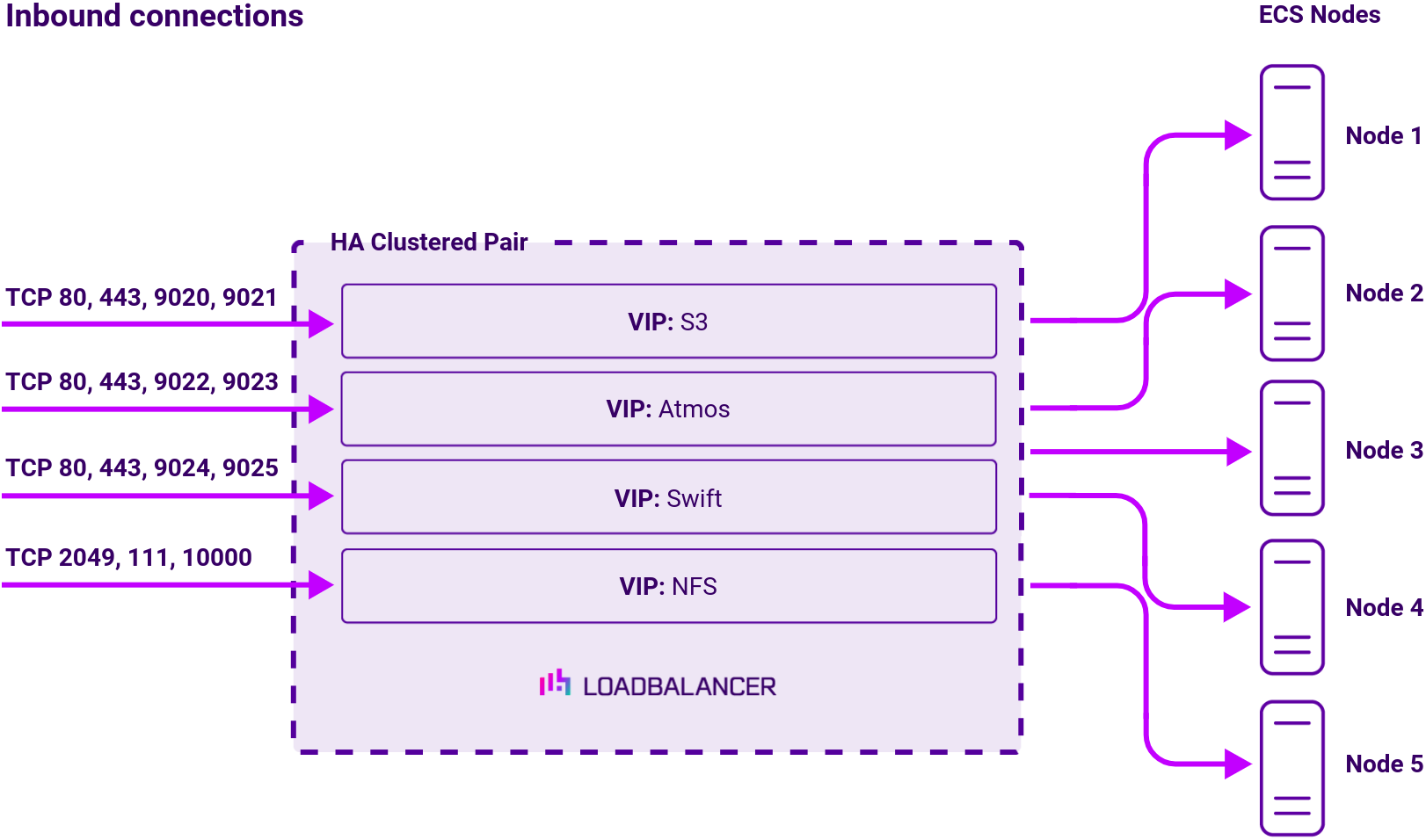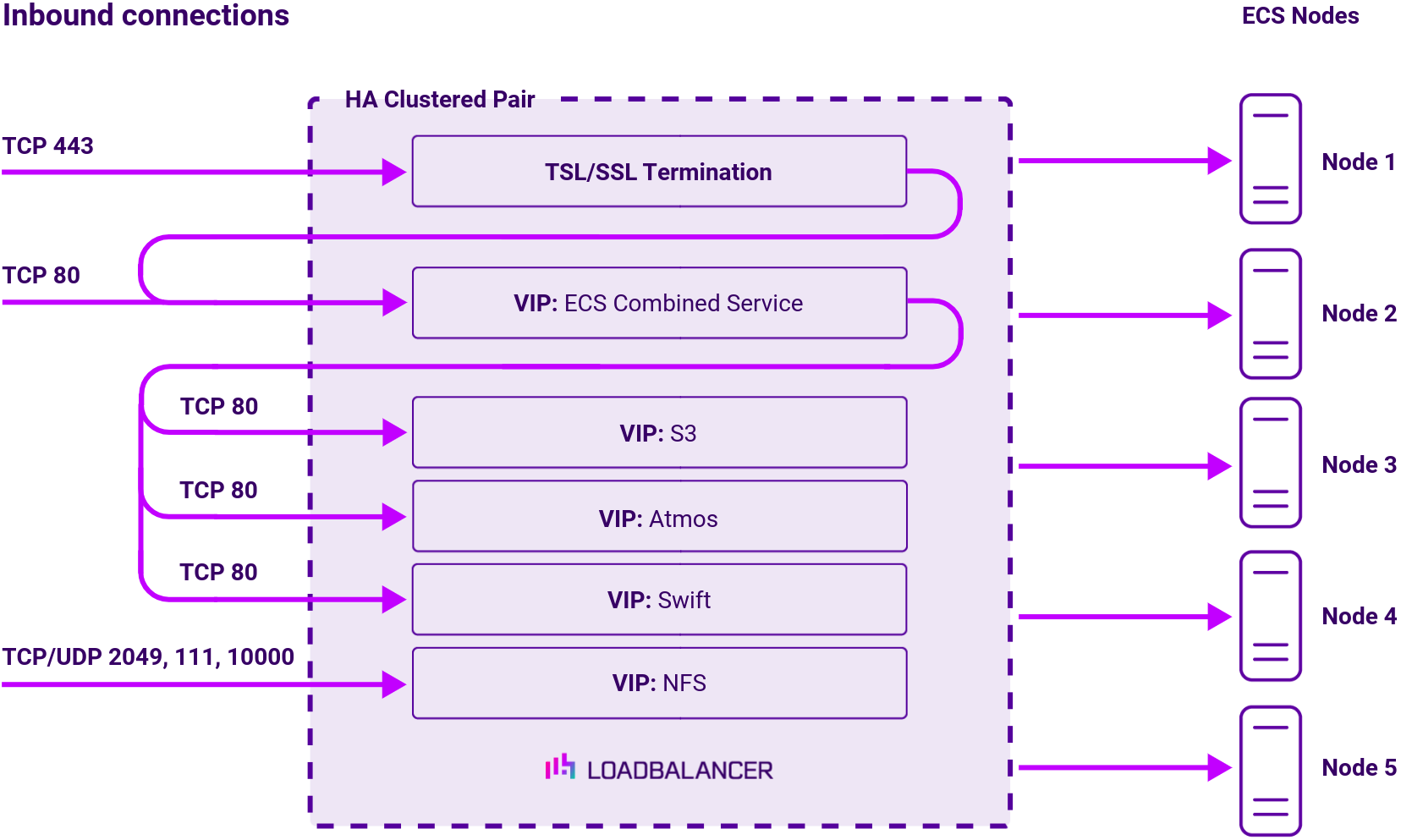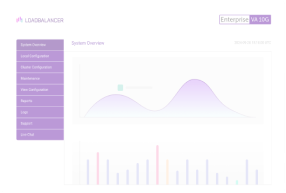Benefits of load balancing Dell EMC ECS
Load balancing Dell EMC ECS provides the following benefits:
- Performance optimization: Load balancers evenly distribute incoming data loads across all available ECS service nodes. This prevents any single node from becoming a “hot-node” or being overwhelmed, which is a risk when using simpler distribution methods like DNS round-robin. By utilizing all nodes efficiently, the overall system can handle more requests and achieve higher throughput speeds. Intelligent routing of requests ensures that no single point of access becomes a bottleneck, which is essential for environments with massive, growing data needs.
- High Availability (HA): Load balancing significantly improves the resilience and uptime of the ECS platform. The load balancer continuously monitors the health and availability of each ECS node. If a node fails, goes offline for maintenance, or becomes unreachable, the load balancer automatically removes it from the service pool and redirects all incoming traffic to the remaining healthy nodes. This ensures that applications remain functional and data access is uninterrupted. For multi-cluster or geo-distributed deployments, Global Server Load Balancing (GSLB) can automatically forward requests to a surviving site in the event of a complete data center failure, providing a robust disaster recovery solution.
- Scalability: Load balancing makes the ECS environment easier to scale and manage during growth. It’s possible to add new ECS nodes to the cluster to handle increased data loads and user requests without disrupting ongoing operations. The load balancer automatically integrates the new nodes into the service pool and starts distributing traffic to them. As data grows, the load balancer ensures that the increasing data load is consistently distributed, allowing the system to maintain predictable performance. ECS supports various protocols (S3, Atmos, Swift, NFS). Load balancers can manage multiple Virtual IP (VIP) addresses to provide highly available access for all these required protocols.
About Dell EMC ECS
Dell EMC ECS is an object storage solution developed by Dell EMC. It uses hardware ‘nodes’ to provide storage and is designed to be flexible, resilient, and simple to deploy. Dell recommends the use of load balancing in an ECS deployment, in order to distribute the inbound workload across all ECS nodes in an effort to maximize performance.
One of Dell EMC’s approved and documented solutions for load balancing ECS is the free and open source HAProxy load balancer. HAProxy is a key component of the Loadbalancer.org appliance, making it a great fit for load balancing ECS deployments.
Why Loadbalancer.org for Dell EMC ECS?
Loadbalancer’s intuitive Enterprise Application Delivery Controller (ADC) is also designed to save time and money with a clever, not complex, WebUI.
Easily configure, deploy, manage, and maintain our Enterprise load balancer, reducing complexity and the risk of human error. For a difference you can see in just minutes.
And with WAF and GSLB included straight out-of-the-box, there’s no hidden costs, so the prices you see on our website are fully transparent.
More on what’s possible with Loadbalancer.org.
How to load balance Dell EMC ECS
Persistence (aka server affinity)
Persistence is only recommended for NFS connections when load balancing a Dell EMC ECS deployment. This is due to the fact that caching occurs on the ECS servers when the NFS protocol is used. To maximize efficiency, a given NFS client should continue connecting to the same ECS server, so as to continue re-using the established cache.
Virtual service (VIP) requirements
To provide load balancing and HA for Dell EMC ECS, the following VIPs are usually required:
- S3 (for object access via the S3 protocol)
- Atmos (for object access via the Atmos protocol)
- Swift (for object access via the Swift protocol)
- NFS (for providing highly available NFS services)
Optionally, additional VIPs may be required as follows:
- ECS Combined Service (for scenario 2, where only a single IP address is client-facing)
- TLS/SSL termination service (for scenario 2, where HTTPS traffic must be decrypted for inspection)
Port requirements
The following table shows the ports that are load balanced:
| Port | Protocols | Use |
|---|---|---|
| 80 | TCP/HTTP | Object access via HTTP calls |
| 443 | TCP/HTTPS | Object access via HTTP calls (encrypted HTTPS) |
| 9020 | TCP/HTTP | Object access via the S3 protocol (HTTP) |
| 9021 | TCP/HTTPS | Object access via the S3 protocol (HTTPS) |
| 9022 | TCP/HTTP | Object access via the Atmos protocol (HTTP) |
| 9023 | TCP/HTTPS | Object access via the Atmos protocol (HTTPS) |
| 9024 | TCP/HTTP | Object access via the Swift protocol (HTTPS) |
| 2049 | TCP/NFS | NFS service (mountd and nfsd) |
| 111 | TCP/ONC RPC | Port mapper service |
| 10000 | TCP/lockd | lockd NFS service |
TLS/SSL termination
Terminating TLS/SSL connections on the load balancer is not recommended, due to the significant computational overhead, this introduces on the load balancer. Termination and decryption should continue to occur at the ECS servers, which are designed and best placed to perform this function. It may be necessary to terminate and decrypt traffic at the load balancer, so that it may then be read as plaintext and sorted. This is required if sorting incoming traffic by protocol is not possible by using different ports or IP addresses.
Health checks
S3, Atmos, and Swift Virtual Services
The S3 and Swift virtual services use protocol-specific health checks to query the readiness of a given ECS server to accept connections for those protocols. The Atmos virtual service uses a standard ‘connect to port’ check, which examines whether the Atmos port is open on a given ECS server to determine whether the server is ready to accept connections using the Atmos protocol.
NFS Virtual Service
The NFS virtual service uses a standard ‘connect to port’ check by default, which examines whether the NFS port (2049) is open on a given ECS server to determine whether the server is ready to accept NFS connections. It is possible to configure a custom health check for the NFS service, which will check the availability of all three ports related to NFS operation (111, 2049, and 10000) on the real servers. Only if all three ports are available will a real server be considered ‘healthy’ and ready to accept NFS connections.
Scenarios
There are two deployment scenarios when using Loadbalancer.org appliances as part of a Dell EMC ECS deployment.
Scenario 1: Virtual services for each protocol

Scenario 2: Single client-facing virtual service



















